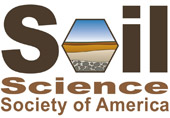Assessment of the Treatability of Chromite ORE Processing Residue (COPR) with Calcium Polysulfide.
Poster Number 17
See more from this Division: PosterSee more from this Session: Soil and Human Health
Calcium polysulfide (CaSx) has been widely used for the treatment of sites contaminated with chromium and its ores. It has been deployed both directly to the soil and also injected into groundwater. Its adoption has been championed by regulators because it is deemed to be both long term and quite unobtrusive.
The mechanisms by which CaSx works involve an initial hydroxylation step followed by a sulfidation process. The parameters are controlled by the dosing, REDOX and competing ions. For CaSx deployment to be successful there must be a level of predictability in the deployment stages.
In this study there were three questions-
- Does the mode of deployment determine the success of the strategy?
- Can a prediction of dosing be matched to a given contaminant scenario?
- Can laboratory findings be translated to the field?
Each of these questions was answered using analysis of total and sequential extracted COPR and soils, detailed water chemistry analysis. The mode of action defined the performance of the CaSx. Both direct injection and drip irrigation were compared for soils and groundwater. Treatment of groundwater, in particular, was highly effective. Results also revealed that CaSx was effective for the treatment of a range of other heavy metals in addition to the tested and tried Cr species.
Range finding of laboratory samples enabled calibration of CaSx to the test medium under investigation. In reality stoichiometric calibrations translated poorly to genuine soil parameters but better physicochemical predictors enabled stronger predictions which were related to the environment. The field environment was found to vary considerably and there were many uncertainties that hindered adequate and comprehensive interpretation but these factors are key if CaSx is to be deployed routinely and offer confidence both to the regulator, stakeholder and investor.
See more from this Session: Soil and Human Health
